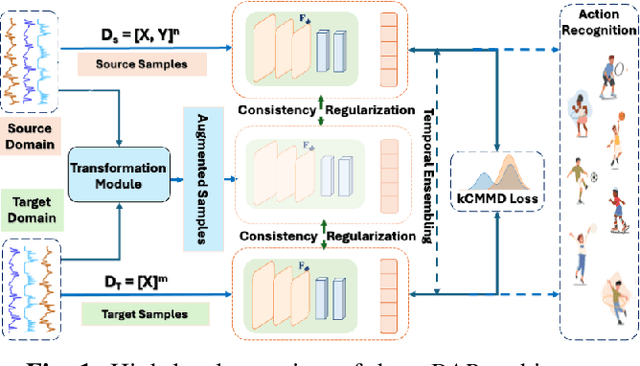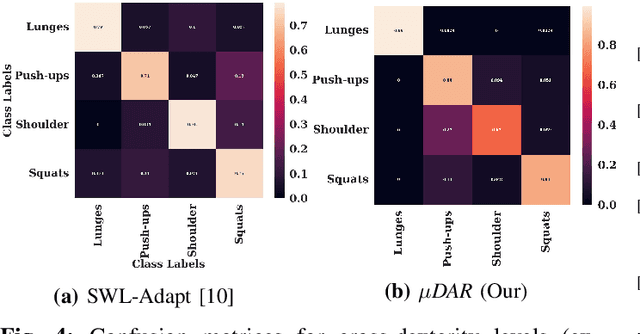Unsupervised Domain Adaptation for Action Recognition via Self-Ensembling and Conditional Embedding Alignment
Paper and Code
Oct 23, 2024



Recent advancements in deep learning-based wearable human action recognition (wHAR) have improved the capture and classification of complex motions, but adoption remains limited due to the lack of expert annotations and domain discrepancies from user variations. Limited annotations hinder the model's ability to generalize to out-of-distribution samples. While data augmentation can improve generalizability, unsupervised augmentation techniques must be applied carefully to avoid introducing noise. Unsupervised domain adaptation (UDA) addresses domain discrepancies by aligning conditional distributions with labeled target samples, but vanilla pseudo-labeling can lead to error propagation. To address these challenges, we propose $\mu$DAR, a novel joint optimization architecture comprised of three functions: (i) consistency regularizer between augmented samples to improve model classification generalizability, (ii) temporal ensemble for robust pseudo-label generation and (iii) conditional distribution alignment to improve domain generalizability. The temporal ensemble works by aggregating predictions from past epochs to smooth out noisy pseudo-label predictions, which are then used in the conditional distribution alignment module to minimize kernel-based class-wise conditional maximum mean discrepancy ($k$CMMD) between the source and target feature space to learn a domain invariant embedding. The consistency-regularized augmentations ensure that multiple augmentations of the same sample share the same labels; this results in (a) strong generalization with limited source domain samples and (b) consistent pseudo-label generation in target samples. The novel integration of these three modules in $\mu$DAR results in a range of $\approx$ 4-12% average macro-F1 score improvement over six state-of-the-art UDA methods in four benchmark wHAR datasets
 Add to Chrome
Add to Chrome Add to Firefox
Add to Firefox Add to Edge
Add to Edge